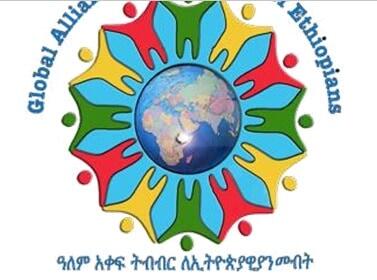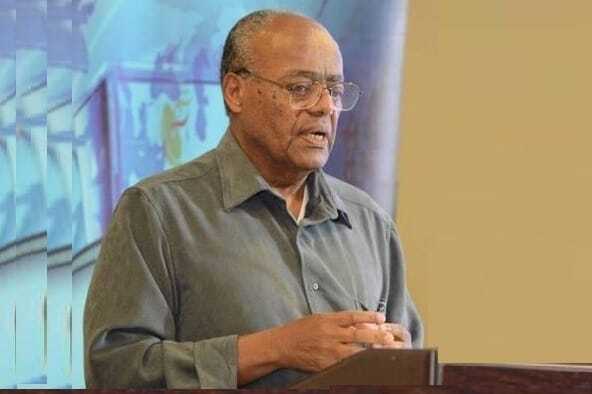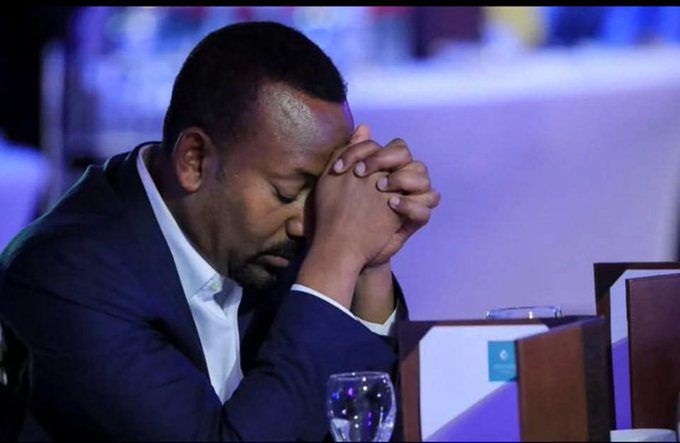By William Davison, Correspondent / October 17, 2012
Fears that unrest would follow the death of Prime Minister Meles Zenawi in August may prove unfounded in Ethiopia, a Western ally in the troubled Horn of Africa.
When Ethiopia’s leader of 21 years Meles Zenawi died in August, citizens were on edge with memories of violent transfers of power.
“A lot of people expected conflict after his death was announced,” says a top young civil servant about Prime Minister Meles’s secrecy-shrouded death. His mother asked him to remain at home to stay safe as “the head of government had died, and this was Africa – and particularly Ethiopia, which has no history of peaceful transitions.”
Yet the appointment of Prime Minister Hailemariam Desalegn by parliament last month was conducted without arms, marking a democratic milestone and relative stability for a key partner of the West in the volatile Horn of Africa.
“[T]he country only has history of about 20 years of democracy,” says a senior ruling party and government official, privately. And for the past month, “at this critical time without the highest government post, everything was peaceful.”
The peaceful transition contrasts sharply with the country’s recent past. In 1991, military dictator Mengistu Hailemariam fled to Zimbabwe as rebels led by Meles’s Tigray People’s Liberation Front (TPLF) advanced on the capital, Addis Ababa, after a 17-year insurgency. Mr. Mengistu himself rose to power after a coup against the feudal regime of Haile Selassie in 1974. A year later, the emperor was killed, and soon murderous purges and military offensives engulfed the country.
The country still has its tensions, however.
Mr. Hailemariam, the new prime minister, leads a historically weak, multi-ethnic southern bloc in the ruling Ethiopian People’s Democratic Revolutionary Front (ERPDF), which is made up of three other ethnic groupings: the Tigray, Amhara, and Oromo, who are the most populous. Meles’s TPLF has dominated the ERPDF since he rose to power in 1991.
The International Crisis Group viewed the end of Meles’s autocratic rule within the “virtually” one-party system of the TPLF as destabilizing. Without its cornerstone, centrifugal forces will be unleashed, the security analysts said.
Transition aided by plan
The promotion of Hailemariam represents the implementation of a transition plan hatched by the late prime minister in 2010, when he was chosen as Meles’s deputy. The idea was to replace – by elections in 2015 – all leaders, including Meles, who assumed office after participating in a rebellion.
Those who believe strife will occur don’t understand that the ERPDF seeks power to serve the public, not to gain “privilege,” says Bereket Simon, Communications minister and a longtime ally of Meles. There is no reason for internal jostling as “we don’t lack power from any position,” the former fighter adds. Hailemariam’s ascent, alongside that of Demeke Mekonnen, his new deputy, the leader of the Amhara National Democratic Movement, and Education minister, is meritocratic and not an example of tribal politics, says the senior EPRDF member who requested anonymity.
He says since a dissenting TPLF faction and allies were ejected in 2001, the party has been ideologically united. The cohesion, he says, extends to the EPRDF’s over five million members, many of whom pack the civil service, public enterprises, and rural administrations.
The conformity of thought stems from the EPRDF’s top-down approach, with members learning doctrine from Meles after his shift from a Marxist rebel to a governing reformer and finally to him admiring China and the Asian Tigers and slamming Western-imposed neoliberalism. Although Meles introduced a market economy, the party still sees itself as a group of revolutionaries leading the transformation of impoverished masses, and believes in the necessity of the state owning all land and dominating key sectors such as telecoms, energy, and banking.
Middle-income by 2025?
For now, the teachings of the “great leader” remain unchallenged. Interpreting public grief at Meles’s passing as a renewed popular mandate, Hailemariam and officials have vowed to achieve his vision to transform Ethiopia into a middle-income country by 2025.
This, they say, will be done by a technocratic “collective leadership,” applying his prescription of using loans and state power to build infrastructure, deliver services, and boost industry, while anchoring Ethiopia’s “renaissance” on the advancement of smallholders, who constitute perhaps 80 percent of a population of 94 million, by improving farming methods.
“My responsibility above all is one of ensuring the continuity of these policies and of honoring his legacy,” Hailemariam said after he was sworn in at a parliament that has one opposition member out of 547.
Despite the existing democratic deficit, the peace and the continuity have reassured donors, investors, and strategic partners, such as the US, who view the government as an effective spender of aid and an accommodating ally in the battle against Islamic extremism in Somalia.
Doubters, such as political analyst Jawar Mohammed from Columbia University in New York, say that the maneuverings at the top of a decapitated TPLF and ongoing turmoil within the sidelined politburo of the Oromo party reveal a fragile state of affairs.
Another obstacle to achieving Meles’s vision is the ambition of economic plans in a nation where exports topped $3 billion for the first time only last year. These include plans to borrow billions for state enterprises to invest in efforts to become a top sugar exporter; and to fund domestically what will be Africa’s biggest hydropower plant, the $5 billion Grand Ethiopian Renaissance Dam, to turn Ethiopian into an electricity hub for East Africa.
The long-term goals are also lofty in an economy that is growing but plagued by high inflation and unemployment. From 2007 to 2011, when output officially increased around 11 percent annually, Ethiopians’ per capita income went from $230 to $400 a year, according to the World Bank. The bank’s lowest threshold for a middle-income nation is average per person annual earnings of $1,026. It will need remarkable, consistent progress to achieve that by 2025.
Perpetuation of Meles’s system will mean the opposition, the media, and civil society remains muted as the EPRDF continues restricting dissent. An immediate test for the government is how to deal with Muslim protesters who are objecting to the arrest of leaders detained for spearheading a campaign for greater religious freedom. Followers of Islam make up at least a third of the population in the historically Orthodox Christian-ruled nation.















